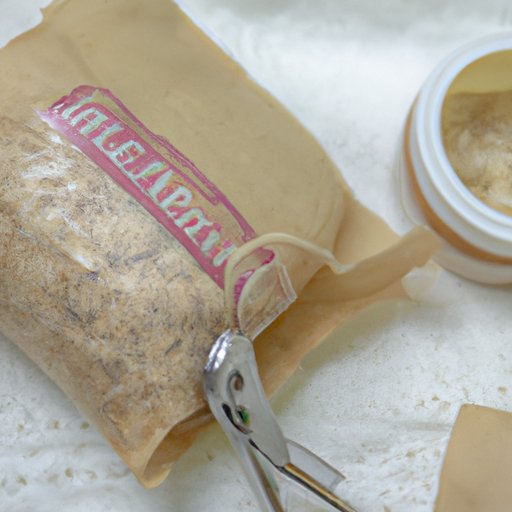
I. Introduction
Eczema is a condition where the skin becomes red, dry, and itchy. It can affect people of all ages and causes discomfort and inconvenience. One of the most common symptoms of eczema is itching, which can sometimes be unbearable. In this article, we will discuss how to stop eczema itching immediately using different methods. Our target audience is anyone who is struggling with eczema itching and is looking for effective ways to manage it.
II. Moisturize regularly
Dry skin can worsen eczema and cause intense itching. Moisturizing your skin regularly can help prevent dryness and minimize eczema symptoms. Use unscented, thick moisturizers and apply them after bathing. Choose products that are free from irritating chemicals and fragrances. Also, avoid hot showers and baths as they can strip your skin of its natural oils, making it dry.
III. Use an ice pack or a cold compress
Applying a cold compress or ice pack to the affected area can provide instant relief from itching and inflammation. Wrap an ice pack in a soft towel and apply it to the skin for a few minutes. You can also use a cold compress made from a clean cloth soaked in cold water. However, be careful not to apply ice or a cold compress for too long as it can cause skin damage. Also, avoid using cold therapy if you have conditions like Raynaud’s syndrome.
IV. Apply soothing creams
Over-the-counter creams containing hydrocortisone or calamine can help reduce itching and inflammation. Hydrocortisone is a mild steroid that can reduce inflammation, redness, and itching. Calamine is a mineral that has a cooling and soothing effect on the skin. Apply these creams sparingly and only to the affected area. Never apply on open wounds or broken skin.
V. Avoid scratching
Scratching can damage your skin and worsen eczema symptoms. Instead of scratching, use other techniques to relieve itching, such as tapping or lightly rubbing the affected area. You can also use distraction techniques like listening to music or reading a book. Keep your nails short and smooth to avoid causing damage to your skin.
VI. Take a bath with oatmeal
Oatmeal baths can help soothe and moisturize eczema-prone skin. Oatmeal contains anti-inflammatory compounds that can reduce itching and redness. Add colloidal oatmeal to your bathwater and soak for 15 to 20 minutes. Be sure to use warm, not hot water, as hot water can dry your skin. However, avoid oatmeal baths if you are allergic to oats.
VII. Choose soft, breathable fabrics
Wearing comfortable clothing made from soft, breathable fabrics like cotton or silk can reduce irritation and itching. Synthetic fabrics and wool can irritate your skin and cause eczema symptoms to flare up. Also, wash your clothes with mild detergents and avoid fabric softeners, which can be irritating to sensitive skin.
VIII. Avoid triggers
Identifying and avoiding triggers is essential in managing eczema. Triggers can vary from person to person and include stress, certain foods, and exposure to harsh chemicals. Keep a symptom diary to help you identify triggers and avoid them. Also, try to minimize stress in your life and practice relaxation techniques such as meditation or yoga.
IX. Conclusion
Eczema itching can be uncomfortable and distressing, but there are many ways to manage it effectively. Regular moisturizing, using cold therapy, applying soothing creams, avoiding scratching, taking oatmeal baths, wearing soft fabrics, and avoiding triggers are all helpful tips. Remember to be patient and persistent in managing eczema, and consult your doctor if your symptoms persist. We hope this article has been informative and helpful.




